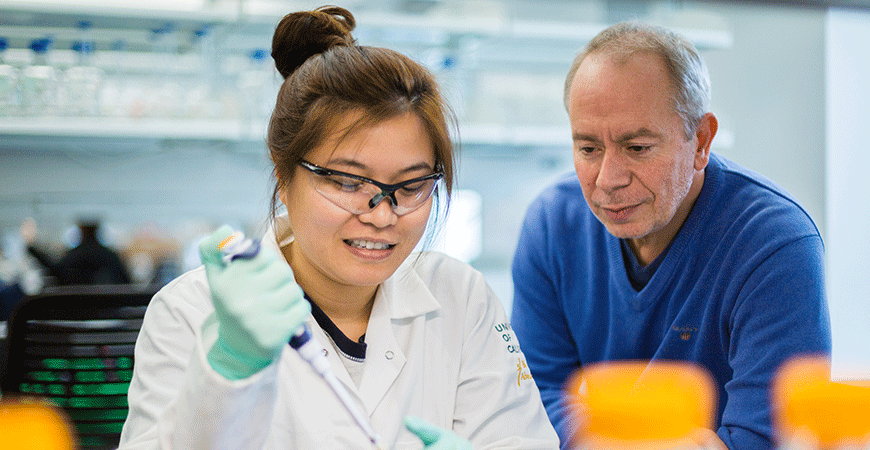
Bioengineering Professor Victor Muñoz has answered a long-standing genetic mystery, and his research suggests that someday, bioengineers could devise ways to control gene activity — manually switching off the genes that contribute to cancer, for instance.
“If this mechanism turns out to be as powerful as we anticipate, engineering it will be relatively straightforward,” Muñoz said. “Controlling the output of genes could be done in a targeted way by new genome editing technologies such as CRISPR.”
In a new paper published in Nature Communications, Muñoz and some of his colleagues detail how certain proteins use a smart trick to find the specific genes they need to control out of the genomic soup comprising tens of thousands of genes inside each cell of even the most complex organisms.
Turns out, they use tiny DNA antennas to track the genes.
Every process in every living system — from a simple bacterium to a complex human — is based on turning specific genes on or off at just the right time, in the right place and at just the right levels.
That process is called transcription, and the proteins that complete that process are called transcription factors (TF). The TF must recognize and bind themselves to specific, tiny, six-letter sequences in DNA next to their target genes. To do that, the TF must sort through the DNA sequence of the entire organism's genome — that’s 2.5 trillion letters in humans — and find their targets quickly enough to allow cells to grow, respond to stimuli, move and multiply in real time, Muñoz explained.
But how do TF track their target genes within the ocean of genomic DNA in any organism? Muñoz and his lab found the answer is a surprisingly simple mechanism that acts as an antenna.
The mechanism allows the TF to recognize partial sequences of the six-letter words they need to find and to detect where in the genome those partial sequences have accumulated in numbers large enough to signify that they are near the target gene.
The accumulations themselves act as beacons for the TF.
“Rather than moving around the whole cell nucleus randomly reading the genome sequence, the TF hovers around the target gene so it can quickly find it and turn it on or off on demand,” Muñoz said. “This mechanism offers a straightforward strategy for reengineering.”
Muñoz, chair of the Bioengineering graduate group, director of the NSF-CREST Center for Cellular and Biomolecular Machines, an affiliate of the Health Sciences Research Institute and a faculty member in the School of Engineering, collaborated on this work with postdoctoral researcher Milagros Castellanos from his previous lab in Spain and UC Merced graduate student Nivin Mothi, both of whom are listed as authors on the paper.
“We are still in the stages of understanding the mechanism as well as possible and exploring how we can change it to induce changes in phenotypes,” Muñoz explained. “Phenotypes are the biological effects of gene change. For instance, one gene change alters the color of a pea from green to yellow — that difference in color is the phenotype.”
The researchers had originally thought the mechanism might be based on a structural change in the TF, but it turned out to be a combination of specific sequence patterns built into the DNA and the TF’s ability to bind to the partial sequences — known as binding promiscuity.
“In proteins, promiscuity is typically associated with poorly evolved or primitive proteins or functions, yet here we find a perfect counterexample in which the most complex organisms exploit it to solve a problem associated with their increasing genomic size and complexity,” Muñoz said.
Muñoz and his lab are working to get a grant to conduct the next stage of research.
“We are interested in further characterizing how this mechanism works at the molecular level, and also its implications for the operation of real, living systems,” he said.
He and his lab are forming a collaboration with Professor Aaron Hernday’s group, which looks at yeast cells, one of the world’s simplest eukaryotic organisms. The researchers are interested in manipulating the antenna mechanism in the yeast cells using genome-editing techniques. They’ll make the antennas weaker or stronger, eliminate them or add them to areas where they aren’t usually found, and see how the yeasts react.



